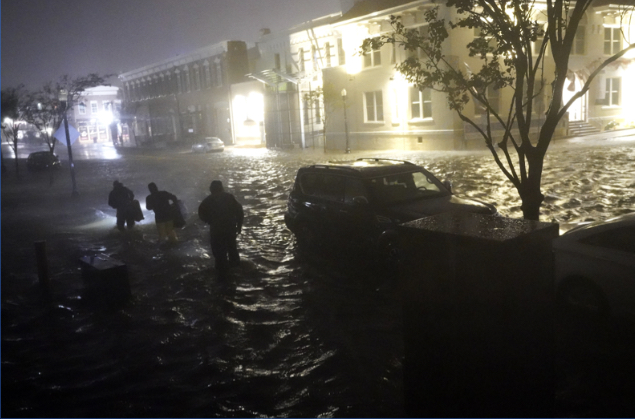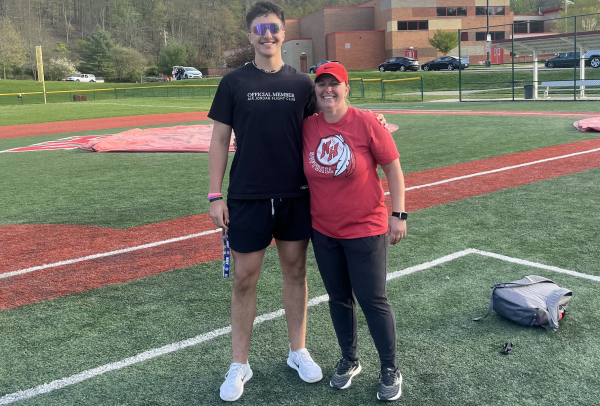2020’s Unusually Active Hurricane Season and Hurricane Sally
September 17, 2020
Hurricane Sally isn’t the first hurricane to happen this Atlantic season, with it being the fourth hurricane to touch U.S. land this year and the seventh to be found during the Atlantic this season. The last time this happened was in 2005, and you may recognize Hurricane Katrina from this time. Katrina was a category five hurricane, causing nearly 2,000 deaths and $125 billion dollars in damages. Hurricane Sally is classified as a category one hurricane with winds that have reached 80 miles per hour, and more than 500,000 homes have already lost power in the states that are expected to be affected. The categories of hurricanes start at one and go all the way up to five with winds at 157 miles per hour.
Despite Sally being tamer on the Saffir-Simpson categories, extreme weather alerts and predictions have been made over the last few days in Alabama, Mississippi, and Florida. The National Hurricane Center reported that, “Catastrophic and life-threatening flooding [is] likely along portions of the north-central gulf coast.” Meteorologists have predicted ten to thirty inches of rain in these states, and tornado watches have been issued in Florida and Alabama. Brandon Miller, a meteorologist with CNN, states that “Hurricanes and tropical storms that make landfall in the Gulf of Mexico are more likely to produce tornadoes compared to storms in the Atlantic.” Tornadoes accompanying Sally are definitely an odd occurrence but not impossible. Sally is crawling along toward the coast at a speed of two miles per hour. Storm surges (rises in water level that are caused by strong winds pushing water onto shore) are happening in long, random bursts along the coast, causing greater flooding as well. Meteorologists have reported that 90% of deaths during tropical storms can be attributed to flooding and these storm surges.
2020 seems to be accomplishing many rare feats that haven’t been seen very often in history. Tropical storm Teddy has been projected to become a hurricane during this week. The only other years with eight hurricanes reported were 1893, 2005, and 2012. If any more tropical storms or hurricanes form, the National Hurricane Center will run out of names to use for this season and have to resort to using the Greek alphabet to identify storms. The last time this happened was in 2005. The Atlantic season ends November 30th. How many more hurricanes and storms can surface before then?
You may also ask, “Why so many hurricanes?” Some believe the cost is technology, and not in the way you would think. Satellites are more advanced than ever before and storms can be seen and predicted long before actually appearing. That begs the question, have this many hurricanes and storms been appearing in the past, simply undetected due to our technology not being as advanced? Putting it that way, the frequency of these storms doesn’t feel as scary as it did previously. Scientists also attribute climate change to the sudden frequency of storms, though with less confidence than the theory of technology improving detection. However, scientists working with these things have high confidence that rising temperatures and sea levels caused by climate change have increased storm surge, rainfall, and flooding. Warm temperatures cause hurricanes due to the ocean absorbing much of the heat generated, and this summer was hotter than average. Research also suggests that hurricane frequency will go down however the intensity of hurricanes will increase.
Here in in-land Pennsylvania, we don’t have to worry about some of the more serious effects. Storm surges can only affect areas within five miles of the storm and high winds can reach around 500 miles inland. Rainfall can reach up to or over 1,000 miles. Pennsylvania is a little over 1,000 miles from the Gulf Coast so expect heavy rains and storms here. If you have family in Alabama, Florida, Mississippi, and neighboring states, advise that they visit the CDC’s site for safety precautions to take during a hurricane and listen to official advisories from the state or other similar organizations.
For more resources visit: https://www.cdc.gov/disasters/hurricanes/before.html











